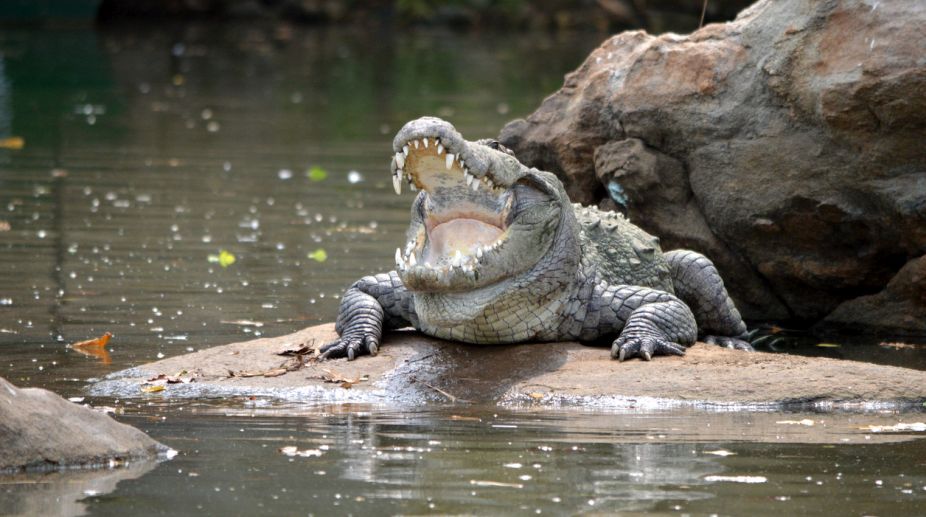In view of the breeding season of estuarine crocodiles of the Bhitarkanika National Park will remain out of bounds for tourists and visitors from on Tuesday. The prohibition will be enforced from 1 May and will remain effective till 31 July, said officials.
Prohibition is being imposed in views of the breeding season of salt-water crocodiles. Human interference would disturb the breeding animals. “The reptiles often turn violent and attack intruders during this period. So the objective is to ensure the safety of humans and provide congenial environment to the breeding crocodiles,” said Bimal Prasanna Acharya, Divisional Forest Officer, Rajnagar Mangrove (wildlife) Forest Division.
Advertisement
As per the latest headcount of these animals, 1698 estuarine crocodiles were counted living along the Bhitarkanika’s water bodies. Keeping in view the commencement breeding season, the forest department is prioritizing safety of local people. Local residents need to remain watchful and vigilant.
People could ensure their own safety by keeping safe distance crocodile-infested water-bodies.Crocodiles are found straying from their habitats into water bodies in and around the human settlements. Man-crocodile conflict often reaches a flashpoint in peripheral villages of Bhitarkanika wildlife sanctuary.
The species are itinerant in nature and stray into adjoining water-bodies because of its increase in hyper-salinity contents.After a temporary sojourn, they leave for their permanent habitation corridors within the Bhitarkanika habitation corridors, according to forest officials.
Wildlife researchers studying on salt water crocs are of the view that habitat of these species is getting squeezed in about 26 square kilo metre of water bodies within the national park. These reptiles prefer the ideal water bodies because of its salinity contents.
The salinity level in some of the water bodies might be dropping proving less ideal for crocodiles. There are large habitats for saltwater crocodiles in Sundarbans in West Bengal and large mangrove wetlands in Andaman Islands, but those cannot match density and population of crocodile available in wild habitats of Bhitarkanika.
“Albino estuarine species are also not found in these mangrove wetland sites,”said crocodile researcher Dr. Sudhakar Kar. Four decades ago when the Government of India and UNDP thought of saving crocodiles, there were hardly three to four nests detected in the area while the population of salt-water crocodiles in Bhitarkanika area was estimated to be 95, including 34 adults. Now, the population has swollen to 1698 as the latest census report.











